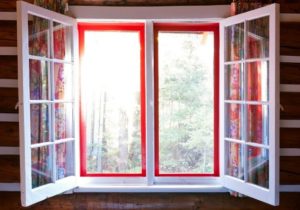Important Considerations for Choosing Window Frames

Many homeowners focus primarily on the window as a whole, considering what styles and number of glass panes will best suit their needs. However, the window frames are important enough to consider on their own. They affect the look, the function, and the energy efficiency of your windows. Below are some important considerations for when you’re choosing window frames.
Frame MaterialYour biggest consideration for the frame is its material. The material you choose will affect the frames’ appearance and energy efficiency. It will also affect the initial cost of your windows.
Aluminum window frames are usually the most budget-friendly option. They are durable in that they won’t crack, peel, bend, or warp. However, they’re low performers in regard to energy efficiency. What’s more, some homeowners don’t like the look of aluminum. That said, they are paintable, so you can change their color.
Vinyl window frames are the next step up in price. They also resist cracking, peeling, warping, and bending, but they’re not paintable. Vinyl frames present a high level of energy efficiency. They also do a good job of mimicking wood.
Many window frames usually try to mimic wood. However, wooden frames themselves can be vulnerable to cracking, warping, and bending. However, they are high up with energy efficiency. Naturally, they’re also paintable.
Fiberglass and composite frames are similar in that they’re both made of two different materials. Fiberglass frames consist of glass fibers and polyester resins. They’re paintable and good with energy efficiency. Composite frames consist of wood pulp and plastic. They’re similarly energy efficient and also paintable. Both can mimic wood.
Frame ColorThe color of your frames can impact how well they complement both the exterior and interior of your home. Only vinyl isn’t paintable, so you may only focus on color if you’re considering that material. However, painting window frames is a time-consuming job, so you probably don’t want to go into a replacement project with that in mind.
Many homeowners opt for basic white because this color goes with any color palette. What’s more, white further lightens the visual effect of the windows, making them seem a little larger. Frames also come in a range of other neutral colors, mostly shades of beige and gray.
You can also opt for darker colors such as deep red, hunter green, or black. You see these colors with more modern styles of houses. Even if you choose a material other than vinyl, such colors may be difficult to paint over because of their depth. So, give some significant thought to whether these hues will work for your house long term.
Divider PresenceWith traditional or historical styles of homes, designers often turn to divided panes. These windows consist of the large frame and multiple miniature frames within the whole. Usually the miniature frames create a grid, but they may also fan out, especially with any circular windows.
Such divided windows can be attractive, however, true divided windows can be costly. They might also feature more weak points.
Many homeowners choose attached grids instead. These grids aren’t really a part of the frame because they’re strips of wood glued directly to the glass. They mimic divided windows well.
WarrantyWith windows, you’ll want to look into warranties. When you talk with prospective contractors, ask about an installation warranty, which is meant to cover any poor or defective work from the installation.
Particular to the frame is the product warranty. This warranty covers defects in materials and manufacture. Ask about the type of warranty offered for the window itself and whether it’s transferable.
Attend to the window frames as you choose your replacement windows. Consult with Central Glass Company when you’re ready for more information.

